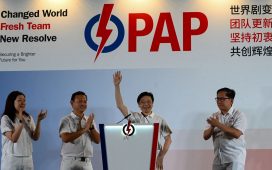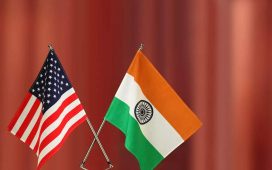Nuclear power has been touted as a proven, safe way of producing clean energy, but why isn’t it more widely adopted?
Sean Gallup | Getty Images News | Getty Images
As the world pushes toward its goal of net-zero emissions by 2050, nuclear power has been touted as the way to bridge the energy gap — but some, like Greenpeace, have expressed skepticism, warning that it has “no place in a safe, clean, sustainable future.”
Nuclear energy is not only clean. It is reliable and overcomes the intermittent nature of renewables like wind, hydro and solar power.
“How do you provide cheap, reliable and pollution-free energy for a world of 8 billion people? Nuclear energy is really the only scalable version of that, renewables are not reliable,” Michael Shellenberger, founder of environmental organization Environmental Progress, told CNBC.
Governments have started to pour money into the sector after years of “treading water,” according to a report by Schroders on Aug. 8.
According to the report, there are 486 nuclear reactors either planned, proposed or under construction as of July, amounting to 65.9 billion watts of electric capacity – the highest amount of electric capacity under construction the industry has seen since 2015.

Only a few years ago, the International Energy Agency had warned that nuclear power was “at risk of future decline.” The report in 2019 said then that “nuclear power has begun to fade, with plants closing and little new investment made, just when the world requires more low-carbon electricity.”
Schroders noted that nuclear power is not only scalable, but much cleaner — emitting just 10-15 grams of CO2 equivalent per kilowatt hour. That’s competitive with both wind and solar energy and substantially better than coal and natural gas.
Nuclear power is also the second largest source of low carbon energy after hydro power, more than wind and solar combined, Schroders said.
Shellenberger’s view is that renewable energy is reaching the limits of what it can achieve in many countries. For example, hydroelectric power is not viable in all countries, and those that have them are “tapped out,” which means they cannot exploit any more land or water resources for that purpose.
Nuclear power is a great alternative, with “very small amounts of waste, easy to manage, never hurt anybody, very low cost when you build the same kind of plants over and over again,” he added.
That’s the reason why nations are having a second look at nuclear power, Shellenberger said. “It’s because renewables aren’t able to take us where we need to go. And countries want to be free of fossil fuels.”
Nuclear safety
Twelve years after Fukushima, we’re just getting better at operating these plants. They’re more efficient, they’re safer, we have better training.
Michael Shellenberger
Environmental Progress
In an interview with CNBC’s “Street Signs Asia” last week, Adam Fleck, director of research, ratings and ESG at Morningstar, said the social concern around nuclear power is “somewhat misunderstood.”
While the tragedies in Chernobyl and Fukushima cannot be forgotten, using nuclear is one of the safest ways to produce energy, even taking into consideration the need to store the nuclear waste.

“Many of those [storage facilities] are highly protected. They’re protected against earthquakes, tornadoes, you name it. But there’s a reason why there hasn’t been a significant tragedy or concern related to storage of nuclear waste.”
Shellenberger said: “Twelve years after Fukushima, we’re just getting better at operating these plants. They’re more efficient, they’re safer, we have better training.”
There have been new designs for nuclear power plants that have also enhanced safety, “but really what’s made nuclear safe has been the kind of the boring stuff, the stuff of the trainings and the routines and the best practices,” he told CNBC.
Too expensive, too slow
So, if nuclear has been a tested, proven and safe way of generating power, why isn’t it more widely adopted?
Fleck said it boils down to one main factor: cost.
The extra time that nuclear plants take to build has major implications for climate goals, as existing fossil-fueled plants continue to emit carbon dioxide while awaiting substitution.
“I think the biggest issue of nuclear has actually been cost economics. It’s very costly to build a nuclear plant up front. There’s a lot of overruns, a lot of delays. And I think, for investors looking to put money to work in this space, they need to find players that have a strong track record of being able to build out that capacity.”
But not everyone is convinced.
A report by global campaigning network Greenpeace in March 2022 was of the position that besides the commonly held concern of nuclear safety, nuclear energy is too expensive and too slow to deploy compared to other renewables.
Greenpeace noted that a nuclear power plant takes about 10 years to build, adding “the extra time that nuclear plants take to build has major implications for climate goals, as existing fossil-fueled plants continue to emit carbon dioxide while awaiting substitution.”

Furthermore, it points out that uranium extraction, transport and processing are not free of greenhouse gas emissions either.
Greenpeace acknowledged that “all in all, nuclear power stations score comparable with wind and solar energy.” However, wind and solar can be implemented much faster and on a much bigger scale, making a faster impact on carbon emissions and the clean energy transition.
Nuclear power is a “distraction” from the “answer we need” — such as renewables and energy storage solutions to mitigate the unreliability from renewables, said Dave Sweeney, a nuclear analyst and nuclear-free campaigner with the Australian Conservation Foundation.
“That’s the way that we need to go, to keep the lights on and the Geiger counters down,” he told CNBC’s “Street Signs Asia” on Friday.








